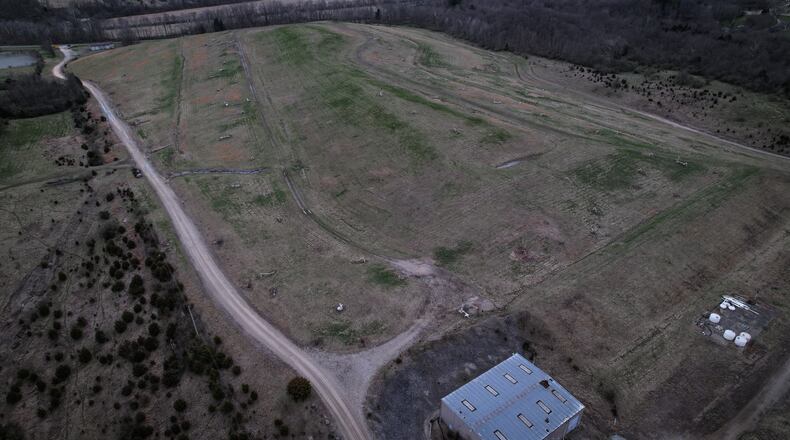Commissioner David Estrop shared the news at the regular Springfield City Commission meeting Tuesday. The November meeting comes as a result of the consent decree announced by the Department of Justice and the EPA in May, and after the U.S. District Court for the Southern District of Ohio approved the cleanup plan earlier this month.
The Region 5 EPA office in Chicago plans a Zoom work session to talk with city officials and Clark County Health Commissioner Charles Patterson. Specifically, the agenda includes the next steps in implementing the clean-up, including the design and a timeline for work.
Estrop celebrated the announcement, noting that it has been 40 years in coming.
“The problem precedes my election to this commission,” Estrop said. “Members of the community who have been fighting this battle for so long will finally see action to address this danger to our water system.”
The 8.5-acre Tremont City Barrel Fill site located in German Township is a closed industrial waste landfill. During operations from 1976 to 1979, it’s estimated about 51,500 drums and 300,000 gallons of industrial waste were disposed of at the site.
Patterson said the perseverance of the community is finally paying off.
“The EPA heard loud and clear from this community that we care, that we are involved and we are watching. They know we are not going to let something less than the best resolution happen,” he said.
The companies identified as potentially responsible parties who have agreed to cover expenses related to the clean-up include: Chemical Waste Management Inc., Franklin International Inc., International Paper Co., Procter & Gamble Co., PPG Industries Inc., Strebor Inc. and Worthington Cylinder Corporation.
All were either owners, operators or users of the disposal site. Through the Superfund Alternative Approach Agreement, they acknowledged their responsibility for the clean-up of contaminants.
Patterson stressed that community involvement was a key to the process.
“We fought the original EPA decision to seek a compromise that satisfies all parties involved. At the end of the day, we all want this to be cleaned up, we want it to be safe and want to protect it forever,” he said.
Plans call for the companies to cover the anticipated $27.7 million costs associated with excavating and identifying the nearly 1,000 drums containing hazardous substances and disposing of them off-site.
Remaining hazardous and non-hazardous solid waste and contaminated soil will be consolidated and again buried on site in a newly constructed, engineered, double-lined cell with leachate collection. That will provide an additional safety net to prevent contamination of the critically important Buried Valley Aquifer on site, which Patterson notes is the second-largest aquifer in the nation.
A hazardous landfill cap will cover the area, and groundwater will be monitored on an ongoing basis.
Chemical Waste Management Inc. is the owner of the land and will absorb about 49.5% of the cost, according to Estrop.
Patterson said the EPA has taken the unusual step of appointing a facilitator to meet with all parties and create processes to resolve any conflicts. The facilitator is already lining up meetings and will bring all parties together in December.
“This will really help smooth the path,” Patterson said. “The facilitator will provide mechanisms to resolve concerns and complaints. The companies and contractors will now have to answer to a federal judge. Under the consent decree, there are deadlines and monetary damages if deadlines are missed. There will be accountability.”
Patterson and Estrop agree that it may be 2025 before shovels hit the dirt and the mitigation begins, but both are encouraged by the current signs of progress.
“Before anything can begin, the EPA has to review and approve a Quality Control Process Plan,” said Patterson. “This will be a complicated procedure, and we have to make sure it is done safely, so as to protect the public as we transport hazardous liquid waste away from the site. We have to determine how to do this and do no harm.”
Estrop said the regional EPA office initiating the conversation with local officials “is a welcome sign of their desire to work together with us in solving this long-standing problem.”
